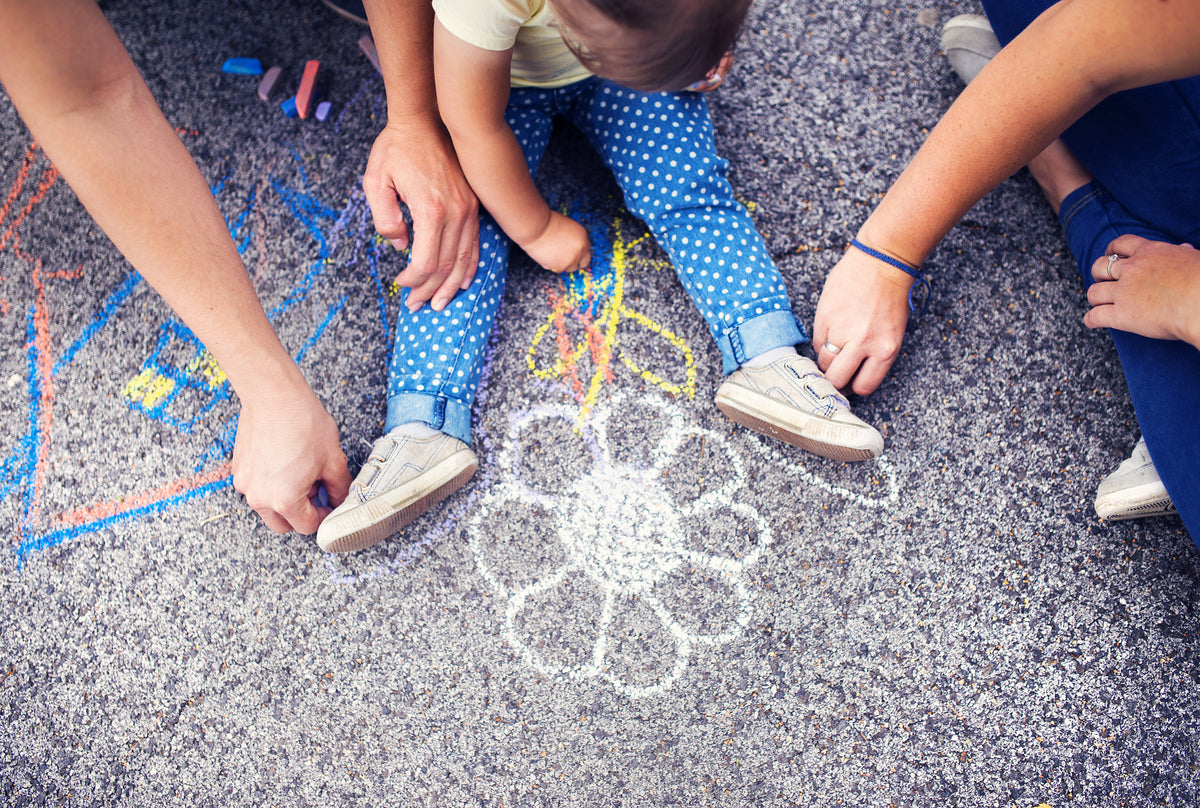Looking for a playful way to connect as a family? Body tracing is a simple, engaging activity that can be adapted for both indoor and outdoor settings. Siblings can take turns tracing one another’s body. Young toddlers can help gather and glue materials. Even grownups can get in on the fun!
Documenting your family’s body tracing experience is a powerful way to reflect on physical and artistic growth. Whether you roll up your body-sized creations and tuck them away in a closet or photograph your family’s creative process, try to revisit the experience in the coming months. Invite your child to share his or her observations before sharing your own.
Here are a few conversation starters:
“Here’s a photo of the body tracing you made in Central Park this spring. Let’s compare this spring photo with the body tracing you made today!”
“How are they similar?”
“What do you notice that’s different?”
“Do you notice a difference in the size of each body tracing?”
You can also share what you notice.
“I see that you included more details when drawing your face this time.”
“I notice that your legs and arms are longer now. You’ve really grown!”
INDOOR BODY TRACING
Find your favorite set of crayons, invite your child to lay on the floor and take turns tracing one another’s body.
Wondering what to trace on? Use the backside of wrapping paper or tape paper bags together to create a body-sized canvas.
Next, gather bits of yarn, buttons, or paper scraps to create facial features, clothing, and accessories. Having a small mirror nearby is helpful!
Rather than rushing through the process, encourage your child to return to his or her body tracing throughout the weekend to add new details.
OUTDOOR BODY TRACING
Find your favorite set of sidewalk chalk and take this activity to the pavement!
Turn to natural materials like twigs, leaves, and pebbles to create facial features, clothing, and accessories.
Take photos of your family’s body tracings and revisit this experience in the fall. Chat about how much your child has grown and the different natural materials you collected in each season.
